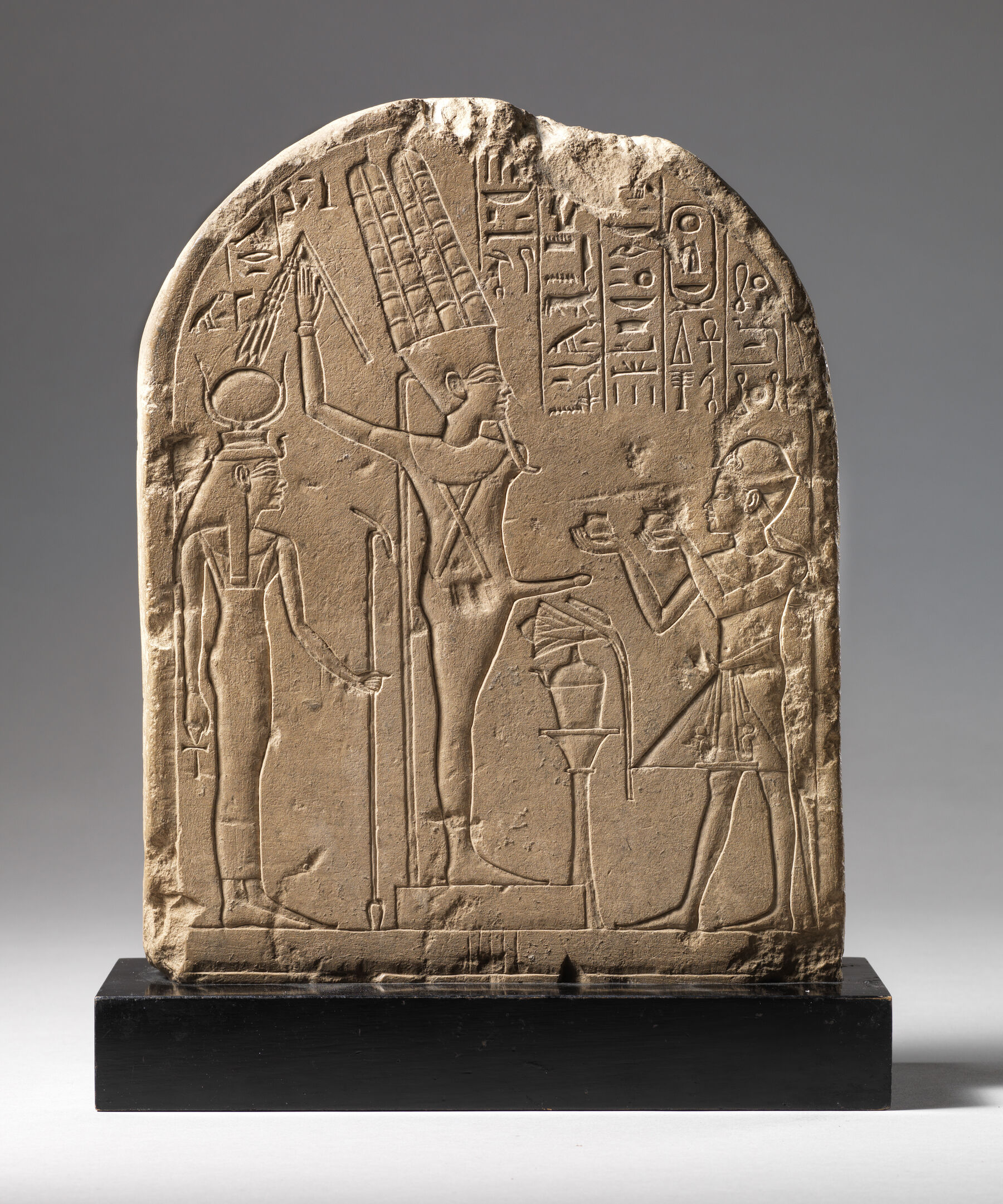This unique stela commemorates the deceased ruler Ahmose (1539–1515 BCE), who inaugurated Dynasty 18 in the New Kingdom. The relief style places the stela’s manufacture later in the reign of Tutankhamun (1334–1324 BCE). At this time, royal cults were reinstated after the reign of Akhenaten, who wiped out the cults of other gods in favor of worshiping a single deity—the Aten sun disk. It is possible that the stela was a votive offering for King Ahmose that coincided with the reestablishment of his royal cult at Abydos.1 This stela illustrates how style is used to identify and date objects.
The relief stela depicts King Ahmose, identified by cartouche, offering ritual nw-pots to the god Amun-Kamutef and the goddess Isis. The king wears the Blue Crown with a uraeus and long sash, a broad collar, and a short kilt tied with a sporran with two pendant solar uraei. Before him is an offering table with a libation jar crowned by a lotus flower and bud. The text above Ahmose says, “The King of Upper and Lower Egypt, Lord of Action,2 Lord of Appearances, Nebpeh[ty]re, given life, stability and dominion like Re forever and ever.” The unusual spelling of the king’s name without the two t-signs below the nb-sign is also found on an ex-voto fragment from an elite donor named Ahmose from Abydos.3 In front of the king is the god Amun-Kamutef meaning “bull of his mother,” appearing as the ithyphallic form of the god Amun, characterized by his erect penis. He appears as a wrapped mummy, wearing a crown with two tall feathers with a long streamer at the back. He holds a flail in his upraised hand. Behind Amun-Kamutef stands the goddess, Isis, wearing a tripartite wig, a long, strapped sheath dress, and a horned crown with a solar disk and uraeus. The goddess holds a was-scepter, the symbol of dominion, and an ankh, the sign of life.
MH
-
I am indebted to Stephen Harvey for this suggestion. Cf. Manchester Museum, no. 2938: https://egyptmanchester.wordpress.com/2019/10/28/object-biography-24-an-erased-stela-of-tutankhamun/. ↩︎
-
Faulkner, Raymond O. 1962. A Concise Dictionary of Middle Egyptian. Oxford: Griffith Institute. ↩︎
-
See Harvey, Stephen. 1998. “The Cults of King Ahmose at Abydos.” Ph.D. dissertation, University of Pennsylvania.. ↩︎
Bibliography
- Faulkner 1962
- Faulkner, Raymond O. 1962. A Concise Dictionary of Middle Egyptian. Oxford: Griffith Institute.
- Harvey 1998
- Harvey, Stephen. 1998. “The Cults of King Ahmose at Abydos.” Ph.D. dissertation, University of Pennsylvania.
